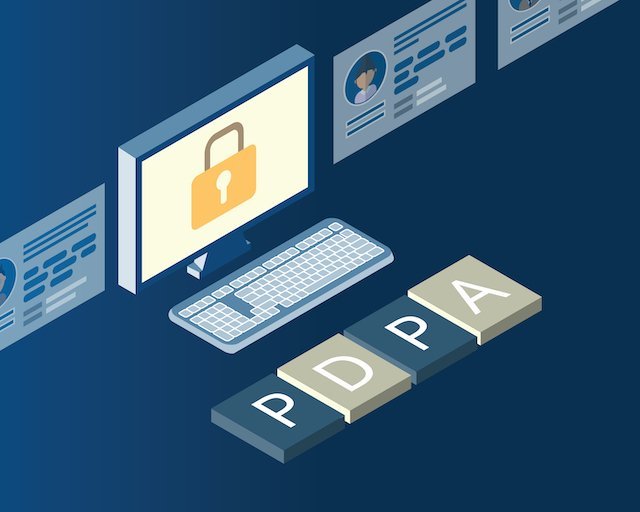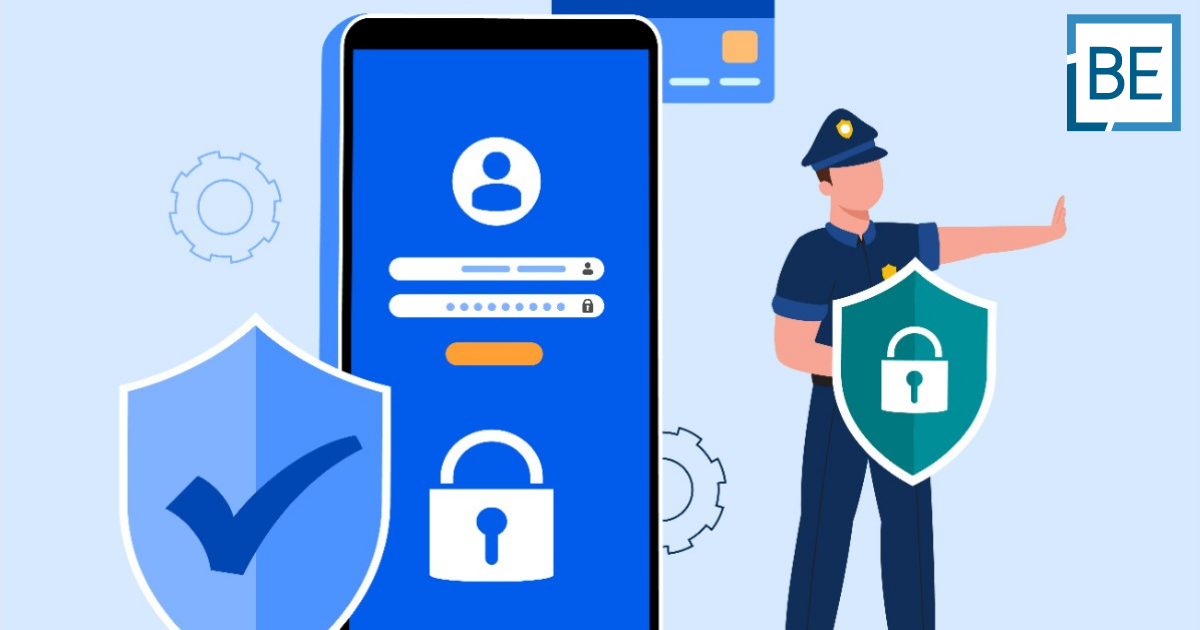
Top Tools and Technologies for B2B Lead Generation in 2024
June 3, 2024






Welcome to the ultimate guide on PDPA compliance in Singapore! Whether you're a seasoned Data Protection Officer (DPO) or just dipping your toes into the vast ocean of data protection, this guide will navigate you through the intricate maze of the Personal Data Protection Act (PDPA). Our goal is to make sure you come out on the other side not just with a clear understanding of the regulations but with practical strategies and a few laughs along the way.
In today's digital world, data is more valuable than oil. However, with great data comes great responsibility. The PDPA is here to ensure that this responsibility is upheld, protecting individuals' personal data while allowing businesses to leverage it responsibly. Think of it as the superhero of data protection laws, wearing a cape and fighting off the villains of data misuse and breaches. But enough with the metaphors, let's dive into the nitty-gritty of PDPA compliance and make sure your organization is on the right track.

Definition and Purpose
The Personal Data Protection Act (PDPA) is Singapore's answer to the global call for data protection regulations. Enacted in 2012 and coming into full effect in July 2014, the PDPA is designed to govern the collection, use, and disclosure of personal data by organizations. Its primary purpose? To protect personal data while still allowing organizations to use data for legitimate business purposes. It’s like being able to have your cake and eat it too, as long as you’re not eating someone else’s cake without their permission.
The PDPA ensures that personal data is handled with care and respect. It emphasizes the importance of obtaining consent from individuals before collecting their data, specifying clear purposes for data use, and ensuring data security. By doing so, it aims to foster trust between consumers and businesses, creating a digital environment where data can flow freely and securely.
Importance of Data Protection in Singapore
Why is data protection such a big deal in Singapore? Well, in an era where data breaches are as common as morning traffic jams, protecting personal information is not just a legal obligation but a fundamental aspect of building consumer trust. In Singapore, a hub of technological innovation and digital commerce, the PDPA is vital for maintaining the country’s reputation as a safe and reliable place for business.
Imagine if your personal data were as vulnerable as a piece of paper floating in the wind. Without robust data protection measures, that's essentially what it is. The PDPA acts as the strongbox, ensuring that personal data is shielded from unauthorized access, misuse, and breaches. This protection is crucial for maintaining consumer confidence, which in turn drives business growth and economic stability.

Historical Background
The journey of the PDPA began in 2012 when Singapore recognized the need for a comprehensive data protection framework. Before this, data protection was more of a wild west scenario, with no unified laws governing the handling of personal data. The introduction of the PDPA was a game-changer, providing a structured approach to data protection and setting the stage for a more secure digital environment.
Initially, the focus was on establishing basic compliance standards and educating businesses about their responsibilities under the law. It was like teaching the ABCs of data protection to organizations that were used to operating without much regulatory oversight. The early days involved a lot of hand-holding and guidance, ensuring that businesses understood the importance of data protection and the steps they needed to take to comply.
Key Amendments Over the Years
Since its inception, the PDPA has evolved to keep pace with the rapidly changing digital landscape. One of the most significant updates came in 2020 with the introduction of the mandatory breach notification requirement. This amendment requires organizations to notify the Personal Data Protection Commission (PDPC) and affected individuals if a data breach is likely to result in significant harm. It’s like a fire alarm for data breaches, ensuring that any incident is quickly brought to light and addressed.
Other amendments have focused on enhancing the consent framework, improving data portability, and strengthening enforcement measures. These changes ensure that the PDPA remains relevant and effective in addressing new challenges and risks. The evolution of the PDPA reflects Singapore’s commitment to maintaining high standards of data protection and adapting to the needs of its digital economy.

Key Definitions in PDPA
Personal Data
At the heart of the PDPA is the concept of personal data. According to the Act, personal data refers to any data, whether true or not, about an individual who can be identified from that data or from that data and other information to which an organization has or is likely to have access. This can include anything from names and contact details to NRIC numbers and photographs. If you can identify a person from the data, it’s considered personal data.
Data Intermediary
A data intermediary is an organization that processes personal data on behalf of another organization. Think of it as a middleman in the data handling process. While data intermediaries are not directly subject to all PDPA obligations, they must ensure that personal data is protected and handled properly. This means implementing security measures and following the instructions of the organization that owns the data.
Consent
Consent is a cornerstone of the PDPA. It requires organizations to obtain permission from individuals before collecting, using, or disclosing their personal data. But it’s not just about getting a nod; consent must be informed, meaning individuals need to know what they are agreeing to. It must also be given voluntarily, without any coercion or undue pressure.
Scope and Applicability
Who Needs to Comply?
The PDPA applies to all organizations in Singapore, regardless of size or industry. This includes businesses, non-profits, and government agencies that collect, use, or disclose personal data. If you’re handling personal data in Singapore, the PDPA is your rulebook.
Exemptions and Special Cases
While the PDPA has a broad scope, there are some exemptions. Public agencies and organizations acting on behalf of the government are exempt from the Act. Additionally, there are specific scenarios where organizations can collect, use, or disclose personal data without consent, such as during emergencies or for investigations. These exemptions are designed to balance the need for data protection with practical considerations in certain situations.

Consent Obligation
Importance of Consent
Consent is like the golden ticket in the PDPA framework. It’s essential for ensuring that individuals have control over their personal data. Without valid consent, any collection, use, or disclosure of personal data is illegal and can lead to severe penalties. It’s all about giving people the power to decide how their information is used.
Obtaining Valid Consent
To obtain valid consent, organizations must be clear about their intentions. This means informing individuals about the purposes for which their data will be used and providing them with a genuine choice to consent or decline. It’s not enough to slip in a consent clause hidden in the fine print; transparency is key.
Purpose Limitation Obligation
Specifying and Informing Purposes
Organizations must specify the purposes for collecting, using, or disclosing personal data. This needs to be communicated to individuals at or before the point of collection. It ensures that people are aware of why their data is being collected and how it will be used, preventing any misuse.
Use and Disclosure of Personal Data
Once personal data is collected, it should only be used or disclosed for the purposes that the individual has been informed of and consented to. If there’s a need to use the data for a different purpose, fresh consent must be obtained. This principle helps maintain trust and ensures that personal data is not used in ways that individuals did not agree to.
Notification Obligation
When and How to Notify Individuals
Organizations are required to notify individuals about the purposes for collecting, using, or disclosing their personal data before or during the collection process. Notifications should be clear, concise, and easily understood, ensuring that individuals are fully informed about how their data will be handled.
Content of Notifications
Effective notifications should include the identity of the organization, the purposes for which data is being collected, and any other relevant information that helps individuals understand the data handling practices. This transparency is crucial for building trust and complying with the PDPA.
Access and Correction Obligation
Rights of Individuals
Individuals have the right to access their personal data held by an organization and request corrections if the data is inaccurate or incomplete. This right empowers individuals to ensure that their personal data is accurate and up-to-date.
Procedures for Access and Correction Requests
Organizations must have clear procedures in place for handling access and correction requests. This includes verifying the identity of the requester, responding within a reasonable timeframe, and making necessary corrections promptly. These procedures ensure that individuals can exercise their rights effectively.
Accuracy Obligation
Ensuring Data Accuracy
Organizations are required to make reasonable efforts to ensure that personal data is accurate and complete. This is particularly important when the data is used to make decisions that affect the individual or is disclosed to other organizations.
Regular Data Reviews
Regular reviews of personal data help maintain accuracy. Organizations should implement periodic checks and updates to ensure that the information remains current and relevant for its intended purposes. This ongoing effort helps prevent errors and ensures data reliability.
Protection Obligation
Implementing Security Measures
To protect personal data from unauthorized access, use, or disclosure, organizations must implement appropriate security measures. This includes technical safeguards like encryption and access controls, as well as administrative measures such as policies and training.
Types of Data Breaches and Prevention
Data breaches can occur due to various reasons, including cyber-attacks, human error, or system failures. Organizations should adopt a multi-layered approach to data security, combining technological solutions with robust policies and staff training to prevent breaches and respond effectively if they occur.
Retention Limitation Obligation
Data Retention Policies
Organizations should establish clear data retention policies, specifying how long personal data will be retained. Once the data is no longer needed for the intended purposes, it should be securely deleted or anonymized to prevent unauthorized access.
Secure Disposal of Data
Secure disposal of personal data is crucial to prevent data breaches. Organizations should use methods such as shredding physical documents and using specialized software to delete digital data permanently. Proper disposal ensures that personal data does not fall into the wrong hands.
Transfer Limitation Obligation
Transferring Data Overseas
When transferring personal data overseas, organizations must ensure that the data will receive a comparable level of protection as it does under the PDPA. This involves assessing the data protection laws of the recipient country and implementing safeguards such as data transfer agreements.
Ensuring Equivalent Protection
To ensure equivalent protection, organizations can use mechanisms like binding corporate rules or standard contractual clauses. These tools help maintain data protection standards across borders and ensure compliance with the PDPA.
Openness Obligation
Maintaining Transparency
Transparency is a core principle of the PDPA. Organizations must be open about their data protection policies and practices, providing individuals with clear information about how their personal data is handled.
Privacy Policies and Notices
Privacy policies and notices are essential tools for maintaining transparency. They should be easily accessible and written in plain language, covering key aspects such as data collection purposes, security measures, and individuals' rights. This openness helps build trust and ensures compliance with the PDPA.

Data Protection Officer (DPO) Role
Responsibilities of a DPO
The role of a Data Protection Officer (DPO) is pivotal in ensuring PDPA compliance. A DPO is responsible for overseeing the organization’s data protection strategy, ensuring that the PDPA’s requirements are met, and serving as the point of contact for data protection matters. The DPO must be well-versed in data protection laws, proactive in identifying and mitigating risks, and adept at fostering a culture of privacy within the organization.
Training and Resources for DPOs
To be effective, DPOs need ongoing training and access to resources. This includes staying updated with regulatory changes, attending workshops, and participating in professional networks. Continuous learning ensures that DPOs are equipped to handle evolving data protection challenges and implement best practices within their organizations.
Data Protection Management Programme (DPMP)
Developing a DPMP
A Data Protection Management Programme (DPMP) is a comprehensive framework that outlines an organization’s approach to data protection. Developing a DPMP involves identifying data protection risks, establishing policies and procedures, and integrating data protection into the organization’s overall strategy. It’s like creating a playbook that guides the organization in handling personal data responsibly and in compliance with the PDPA.
Key Components of a DPMP
A robust DPMP includes several key components:
Conducting Data Protection Impact Assessments (DPIAs)
Importance of DPIAs
Data Protection Impact Assessments (DPIAs) are crucial for identifying and mitigating privacy risks associated with data processing activities. DPIAs help organizations evaluate the potential impact of data processing on individuals' privacy and implement measures to reduce risks. They are particularly important for projects involving large-scale data processing or sensitive data.
Steps to Conduct an Effective DPIA
Conducting a DPIA involves several steps:
Responding to Data Breaches
Immediate Actions Post-Breach
In the event of a data breach, organizations should take immediate actions to contain and mitigate the impact. This includes identifying the breach, isolating affected systems, and assessing the scope of the breach. Swift action can prevent further damage and reduce the risk of significant harm to individuals.
Notifying the Personal Data Protection Commission (PDPC)
Organizations must notify the PDPC and affected individuals if the data breach is likely to result in significant harm. The notification should include details of the breach, steps taken to mitigate the impact, and measures to prevent future breaches. Timely and transparent communication is crucial for managing the breach and maintaining trust with stakeholders.

PDPA Compliance in Different Industries
Healthcare
In the healthcare sector, protecting patient data is paramount. Organizations must implement stringent security measures, conduct regular audits, and ensure that staff are trained in data protection practices. Additionally, healthcare providers should establish clear consent procedures for collecting and sharing patient information. This ensures that sensitive health data is handled with the utmost care and in compliance with the PDPA.
Finance
Financial institutions handle sensitive personal and financial data, making compliance with the PDPA crucial. They should employ robust encryption methods, monitor data access, and conduct regular security assessments to safeguard data. Additionally, financial institutions must be vigilant about data breaches and have strong incident response plans in place to address any security incidents promptly.
Retail
Retailers collect a vast amount of customer data through various channels, including online and offline transactions. To ensure compliance, they should implement clear data collection policies, obtain valid consent, and secure customer data. Retailers should also be transparent about their data practices, providing customers with easy-to-understand privacy policies and giving them control over their personal information.
Technology
Tech companies often process large volumes of personal data, making PDPA compliance a priority. Compliance strategies should include conducting DPIAs, implementing strong data encryption, and ensuring third-party vendors adhere to data protection standards. Tech companies should also stay updated with the latest data protection trends and technologies to enhance their data security measures continually.

Useful Tools for PDPA Compliance
Compliance Checklists
Compliance checklists help organizations ensure that they meet all PDPA requirements. These checklists cover various aspects of data protection, from obtaining consent to data breach response. Using a checklist can help organizations systematically review their practices and identify areas for improvement.
Data Mapping Tools
Data mapping tools provide a visual representation of how data flows within an organization. This helps identify potential privacy risks and ensures that data handling practices align with PDPA obligations. Data mapping is an essential step in understanding the lifecycle of personal data and implementing effective data protection measures.
Risk Assessment Tools
Risk assessment tools help organizations evaluate and mitigate data protection risks. These tools provide a systematic approach to identifying vulnerabilities and implementing appropriate safeguards. Regular risk assessments are crucial for maintaining a strong data protection posture and ensuring ongoing compliance with the PDPA.
Training and Education
Workshops and Seminars
Workshops and seminars provide valuable opportunities for organizations to learn about PDPA compliance. These events offer insights into regulatory updates, best practices, and practical strategies for data protection. Participating in these events helps organizations stay informed and develop effective data protection practices.
Online Courses and Certifications
Online courses and certifications allow individuals to deepen their understanding of data protection principles and gain recognized qualifications. These programs are essential for DPOs and other data protection professionals to stay current with industry standards. Investing in training and education helps build a knowledgeable and capable data protection team within the organization.
Navigating PDPA compliance in Singapore requires a thorough understanding of the Act's principles, a commitment to data protection, and the implementation of robust compliance strategies. By adhering to the guidelines outlined in this guide, organizations can ensure they meet their obligations under the PDPA, protect personal data, and foster trust with their customers.